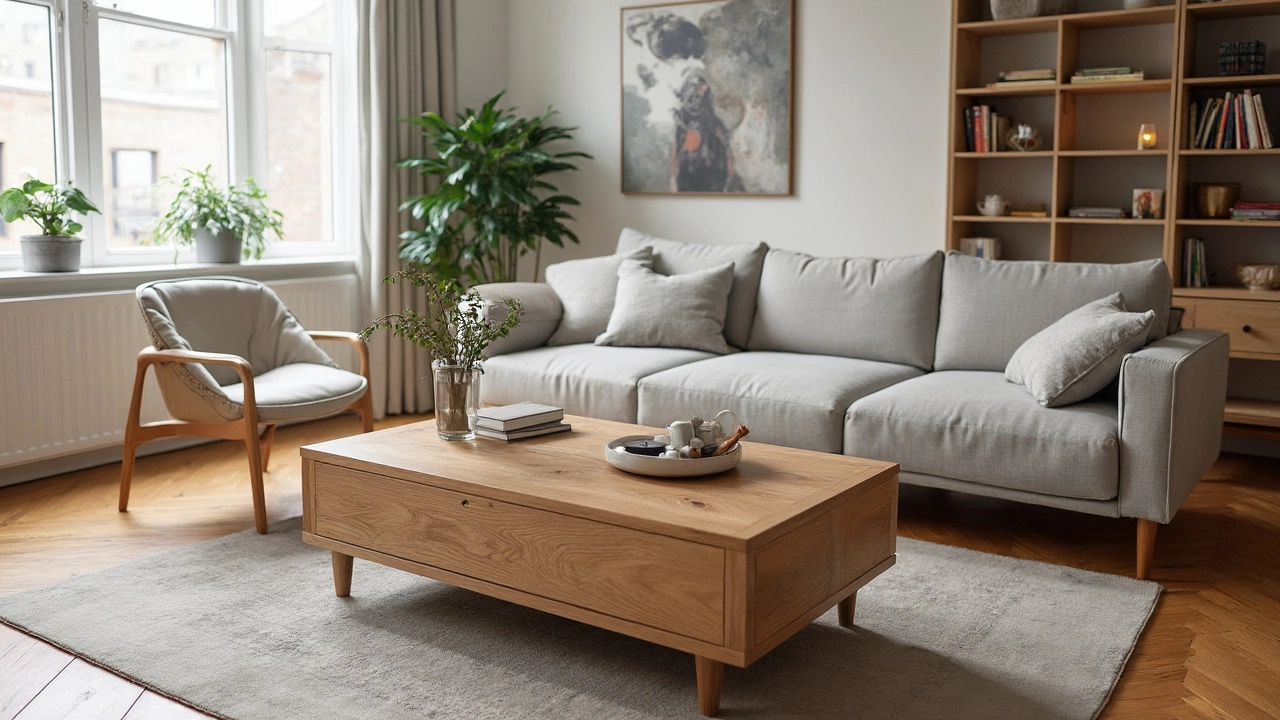Best Wood for Coffee Tables: What to Choose and Why
If you’re setting up a living room, the coffee table is the centerpiece. The wood you pick decides how long it lasts, how it looks, and how much you spend. Below you’ll get the most popular woods, what makes them tick, and simple tips to match a board to your space.
Popular Wood Choices
Oak is the go‑to for durability. It’s hard, resists dents and shows beautiful grain. Whether you go for a light natural finish or a dark stain, oak holds up to everyday spills and kids’ toys.
Walnut brings a rich, dark tone that feels luxurious. It’s softer than oak but still sturdy enough for a coffee table. Walnut ages nicely, getting a deeper patina over time.
Maple offers a clean, bright look. It’s a dense hardwood that’s great for modern or Scandinavian styles. The tight grain makes it easy to sand and refinish if you ever want a new look.
Beech is an underrated option. It’s fairly inexpensive, has a smooth surface, and takes stains well. Beech can handle daily use, though it’s a bit more prone to scratching than oak.
Reclaimed timber adds character and sustainability. Old barn wood, pallet boards or salvaged pine bring unique knots and weathered textures. Just make sure the wood is treated and free of nails.
How to Pick the Right Wood
1. Think about traffic. If the table gets heavy use, stick with oak or maple—both resist dents. For low‑traffic spots, walnut or reclaimed wood works fine.
2. Match your décor. Light‑colored rooms benefit from maple or beech, while darker interiors pull in walnut or a dark‑stained oak.
3. Set a budget. Oak and maple are mid‑range, walnut leans higher, and reclaimed timber can vary widely depending on sourcing.
4. Check the finish. A polyurethane top protects against spills, while an oil finish lets the wood breathe and be re‑oiled later.
5. Know the maintenance. Harder woods need less sanding. If you love to refinish, pick a wood with a tight grain like maple or oak.
When you buy, ask the supplier about moisture content. Wood that’s too wet will warp after years of use. Look for a stable board, preferably kiln‑dried, and let it acclimate to your home for a few days before placing it.
Finally, size matters. A coffee table should be about two‑thirds the length of your sofa and sit 16‑18 inches off the floor for easy reach. Pick a wood that can be cut to those dimensions without costly waste.
Choosing the best wood for coffee tables isn’t rocket science—just match durability, style, and price to your needs. With oak, walnut, maple, beech or reclaimed timber, you’ll find a board that stands up to daily life and looks great for years to come.
Best Wood Choices for a Top-Notch Coffee Table
Choosing the right wood for your coffee table can make all the difference in style and durability. Whether you’re looking for elegance, texture, or a budget-friendly option, each wood type brings unique attributes. From classic oak to exotic mahogany, this guide breaks down the pros and cons of each, helping you find the perfect match for your space. Learn about durability, aesthetics, and even some budget tips so you can pick the best material for your lifestyle.
More
